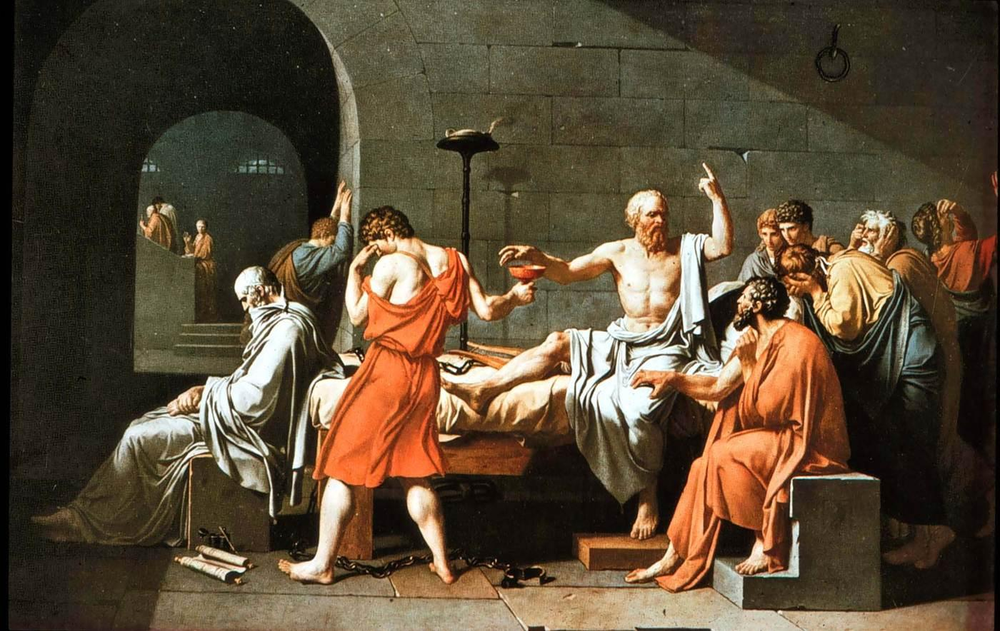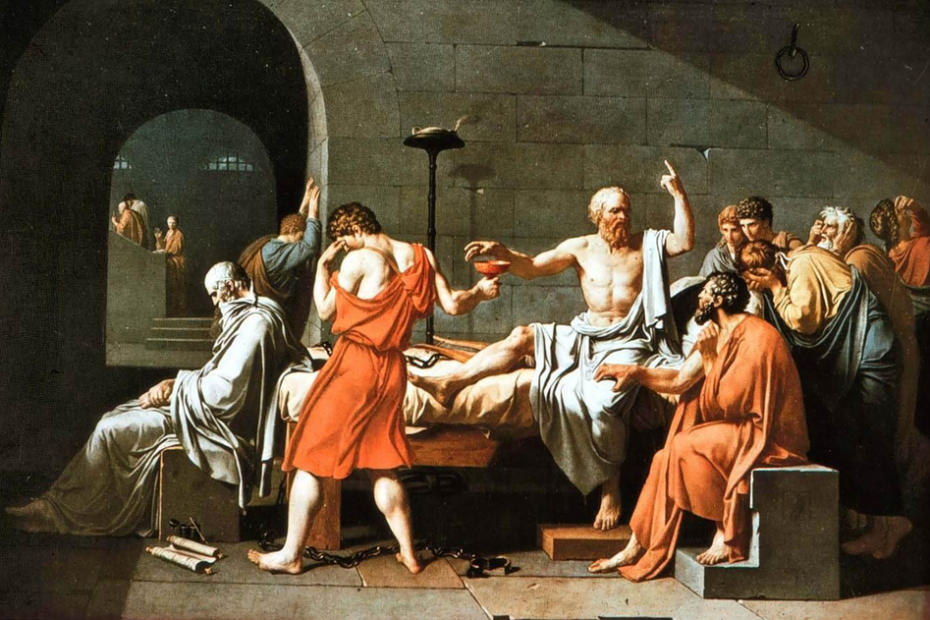
The last moment of Socrates, oh, the mysterious last moment that have plagued scholars, made the best of philosophers scratch their heads. Why did Socrates urged his followers to pay the debt to Asclepius? After all, Asclepius was the Greek God of healing. What did Socrates want to be healed of after dying? Isn’t after dying you don’t need to be healed of anything? Didn’t Socrates, the father of western philosophy, know that? Or, was it that Socrates, according to Friedrich Nietzsche, wanted to be healed of life!
“What a coward!” surely Nietzsche would have said.
Whatever might have been the reason, it was all worth it, making a lot of writers from Plato to Thoreau to the writers who may be questioning, “Why are we writing?” The reputation of Socrates was grounded solidly in the posterity by his choosing to die for his principles. The Athenian courts denounced him for corrupting the youth. And the punishment: You can see here in this painting by Jacques-Louis David.
Now, Jacques-Louis David was a man of principles himself. This painting here is more than depicting the death of a philosopher. But first about the painting:
Death of Socrates is one of the masterpieces of Jacques-Louis David, painted in 1787. In the center we see Socrates giving courage to his followers while reaching for the hemlock (a really poisonous substance) to drink as retribution. At the edge of the bed we see Plato in despair, which may have not been historically correct. In the distance is Xanthippe, Socrate’s wife.
The painting was at a critical moment in French history. It was completed in 1787. 1789 was the beginning of the French revolution ( the head choppings). Jacque-Louis through his Socrates is trying to implant the principles that Socrates stood for in the French society. “To fear death, my friends, is only to think ourselves wise, without being wise,” as the great philosopher put it himself.
